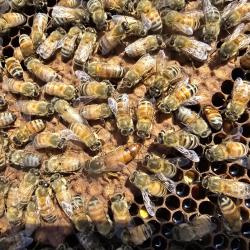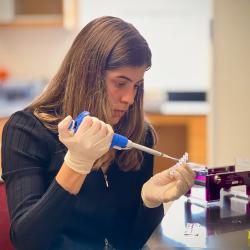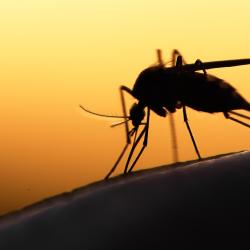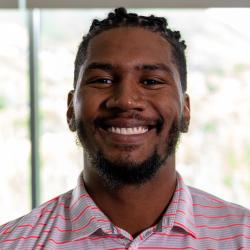Local Elementary School Students Participated in UMD Biological Sciences Lecture
More than 50 sixth-graders attended the class, which also featured a guest lecture by entomology graduate student Samuel Ramsey
Fifty-five sixth-graders from Carole Highlands Elementary School in Takoma Park, Maryland, came to class at the University of Maryland campus last month. They participated in a BSCI 160: “Principles of Ecology and Evolution” lecture alongside UMD students.
 “This is the very first time that most of these kids have been on a college campus,” said Deborah Durgadeen, a sixth-grade teacher at the school who accompanied the students on the visit. “This event encourages them to prepare for and anticipate what college life is all about.”
“This is the very first time that most of these kids have been on a college campus,” said Deborah Durgadeen, a sixth-grade teacher at the school who accompanied the students on the visit. “This event encourages them to prepare for and anticipate what college life is all about.”
Marcia Shofner, a senior lecturer in the Department of Entomology and BSCI 160 instructor, taught the students about species interactions, such as competition, predation and mimicry. Shofner also introduced parasitism, in which a parasite species lives on and harms a host species. Next, entomology graduate student Samuel Ramsey talked to the students about his Ph.D. research on varroa mites, which are parasites of honey bees. Both Shofner and Ramsey asked the elementary school children questions to encourage them to participate in the class.
“I want the students to be in a college classroom and answer questions correctly so that they think, ‘Hey, I can do this,’” Shofner explained.
The elementary school students each paired up with a “buddy” from Shofner’s class who sat next to them during the lecture. After the lecture, the visiting students filled out worksheets on the lecture topics. They left campus with goody bags filled with pencils, erasers, candy and encouraging messages—including some in Spanish.
“Most of these kids would be first-generation college students, like my parents,” said Shanell Erhunmwunse, a letters and sciences major who helped assemble the goody bags. “I was taught to always see myself moving forward. I think that’s what these kids need to hear and I wanted to be the one to tell them that.”
Sixth-graders from Carole Highlands first attended one of Shofner’s courses in fall 2013. Cassandra Thomas, a professional counselor at the school, brought the students to UMD to encourage them to further their education.
“Carole Highlands Elementary School has many kids who are non-native speakers of English and many of the kids’ families don’t think college is all that important,” Shofner explained. “That’s why we wanted to draw the students in and get them thinking about college.”
After receiving positive feedback from the students, Shofner and Thomas made the visit an annual event. Shofner’s students then thought of ways they could support the elementary school students throughout the year. First, they donated winter hats, scarves and mittens to the children. Then, they founded the Terp and Eagle Science Club to provide free after-school tutoring to fourth-, fifth- and sixth-grade students at the school. Shofner serves as the faculty advisor for the club, which serves approximately 30 students per year. According to Thomas, many of the tutored students’ grades improved.
“My hope for the future is that one day, I will either have in my classroom—or hear about—former Carole Highlands Elementary School students who are attending the University of Maryland as a result of the time and attention that our BSCI 160 students gave them,” Shofner said. “I hope that this experience helps the sixth-graders see that they are very bright and capable and should aim high for college.”
###
Media Relations Contact: Irene Ying, 301-405-5204, zying@umd.edu
University of Maryland
College of Computer, Mathematical, and Natural Sciences
2300 Symons Hall
College Park, MD 20742
www.cmns.umd.edu
@UMDscience
About the College of Computer, Mathematical, and Natural Sciences
The College of Computer, Mathematical, and Natural Sciences at the University of Maryland educates more than 9,000 future scientific leaders in its undergraduate and graduate programs each year. The college’s 10 departments and more than a dozen interdisciplinary research centers foster scientific discovery with annual sponsored research funding exceeding $175 million.







